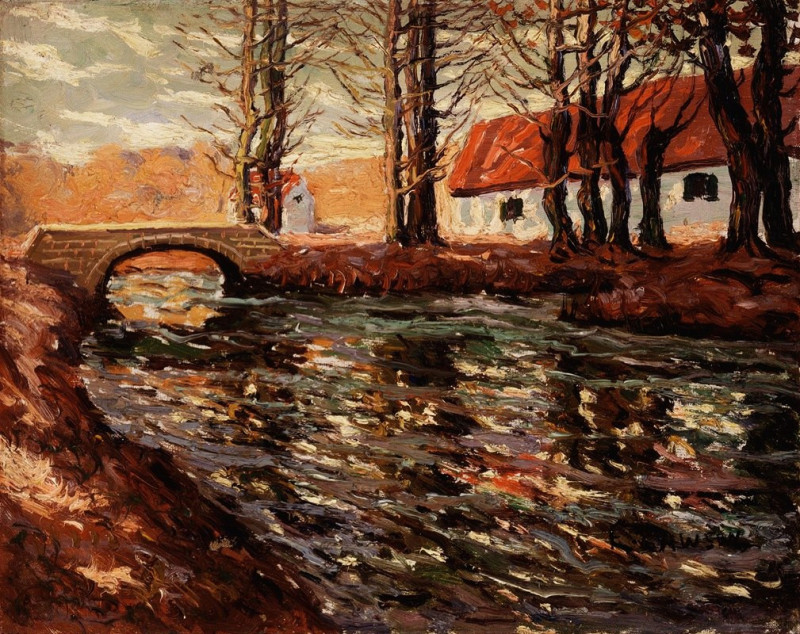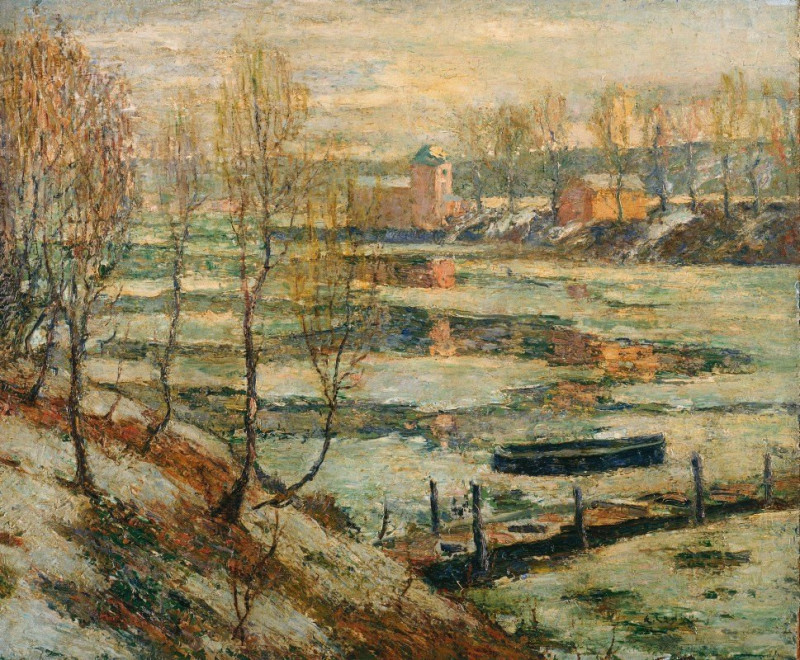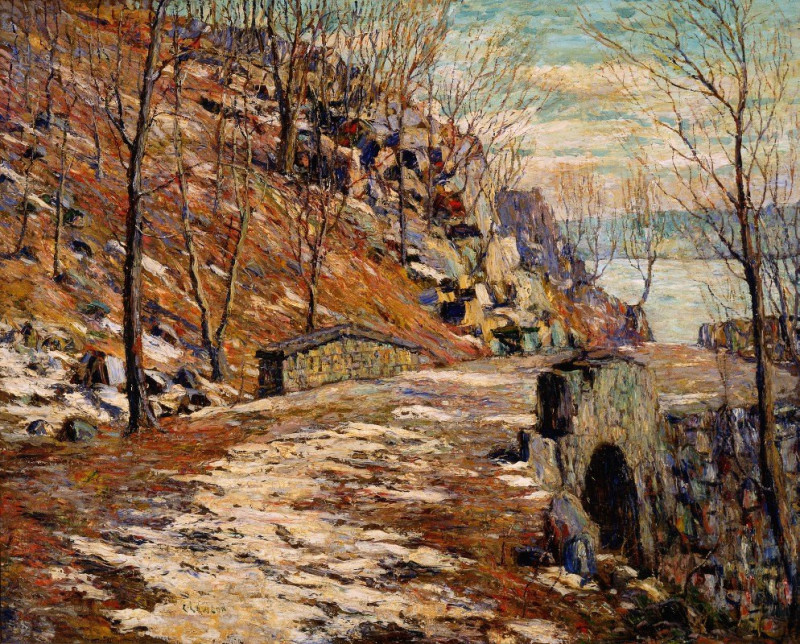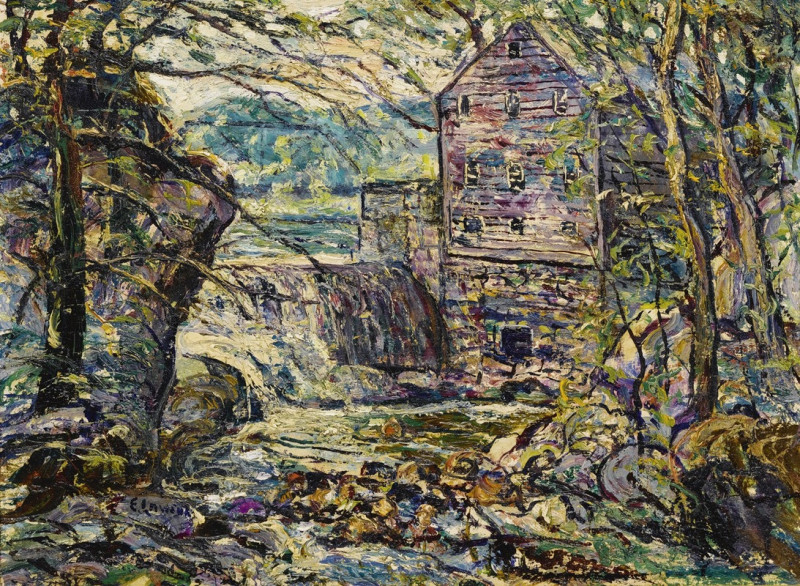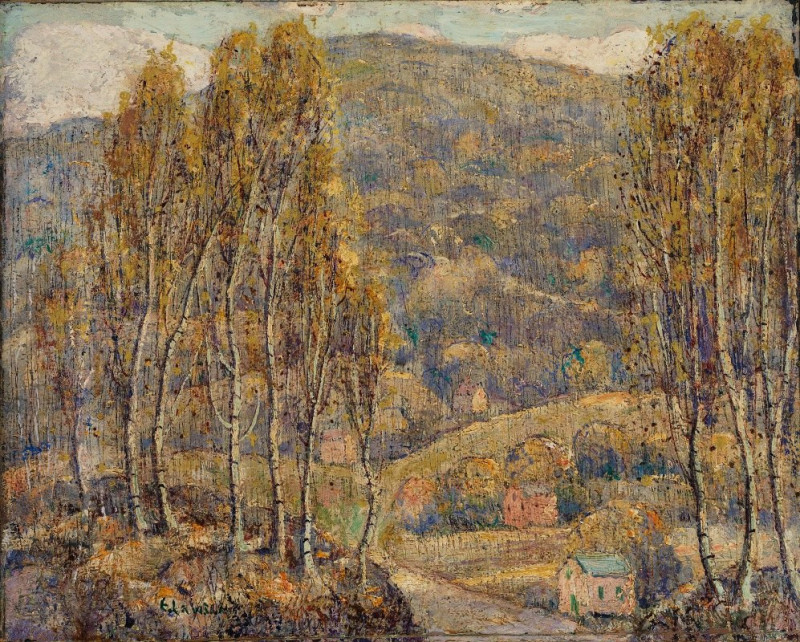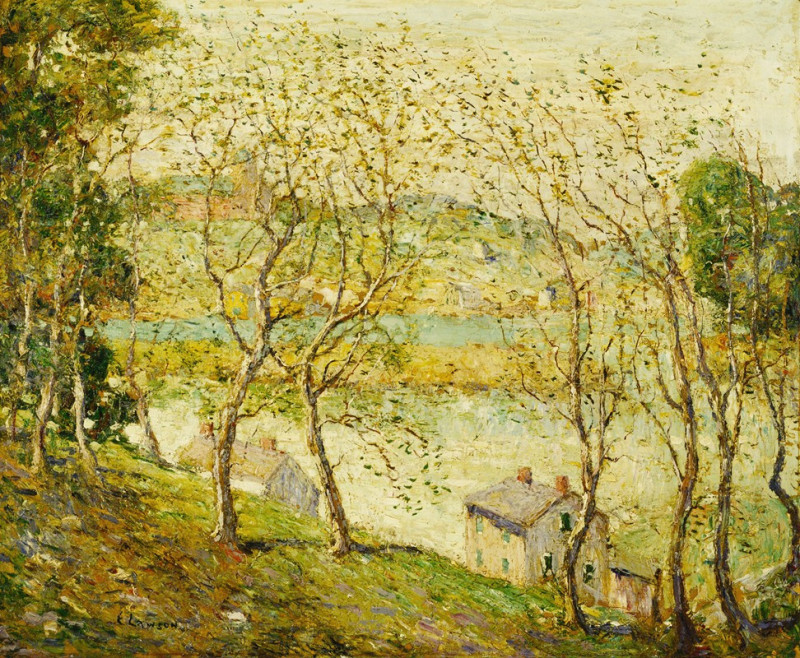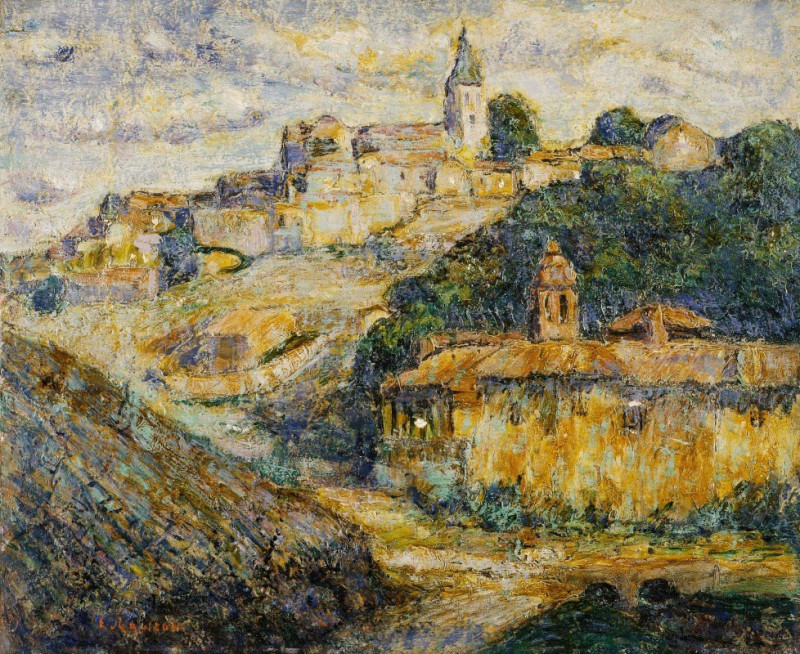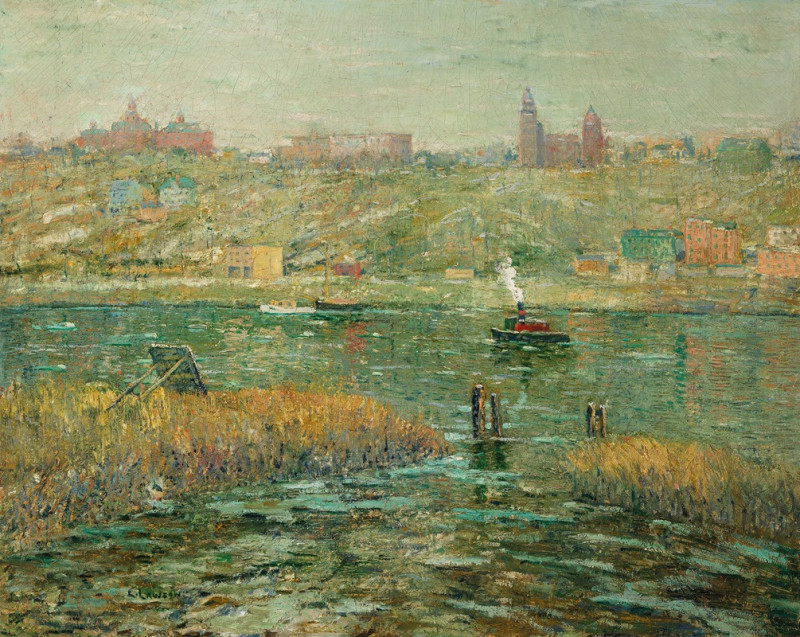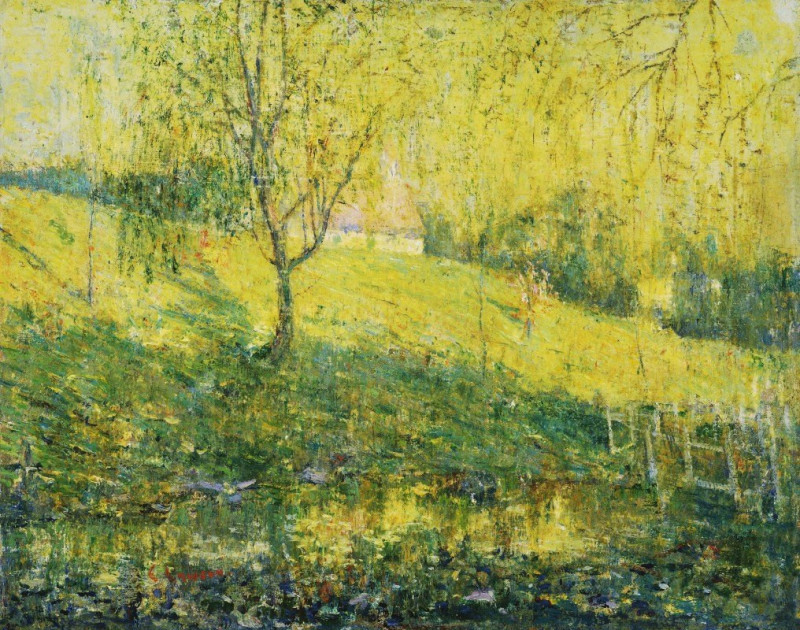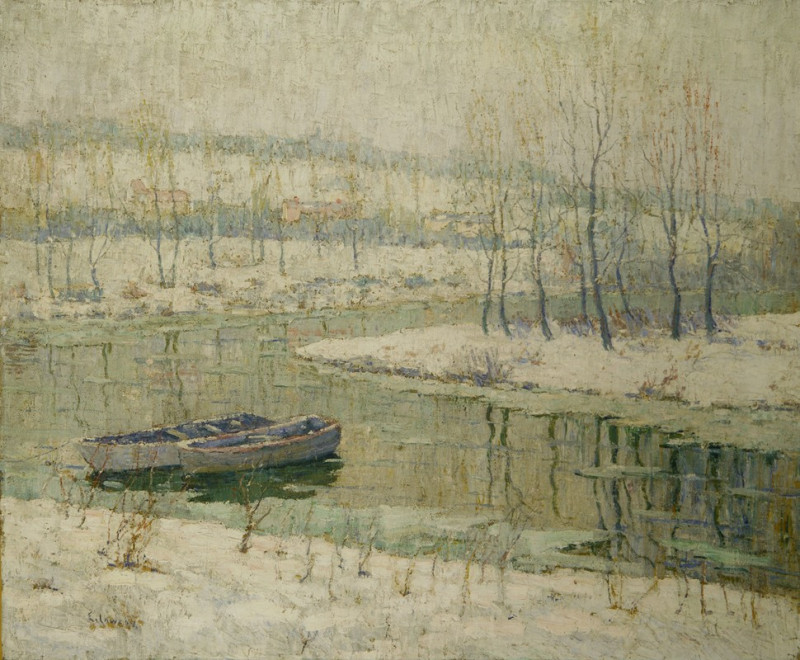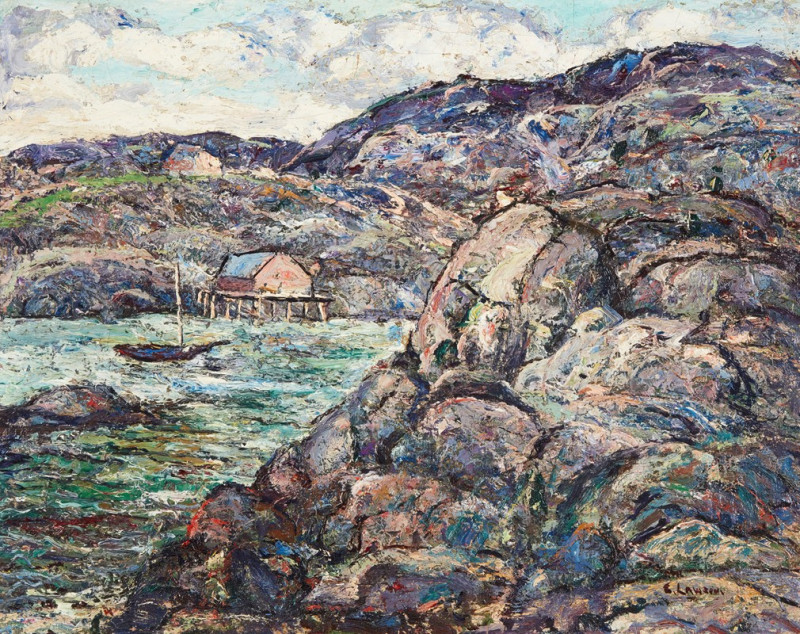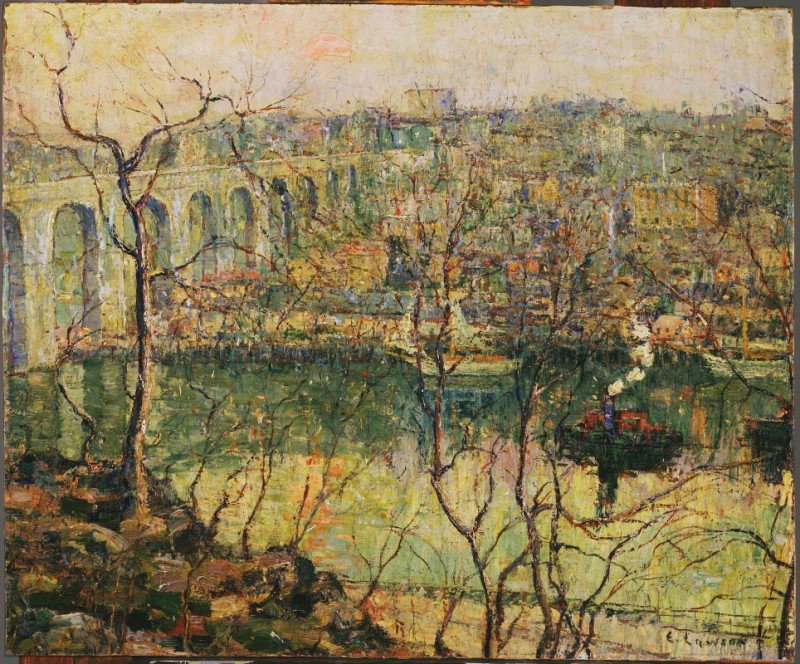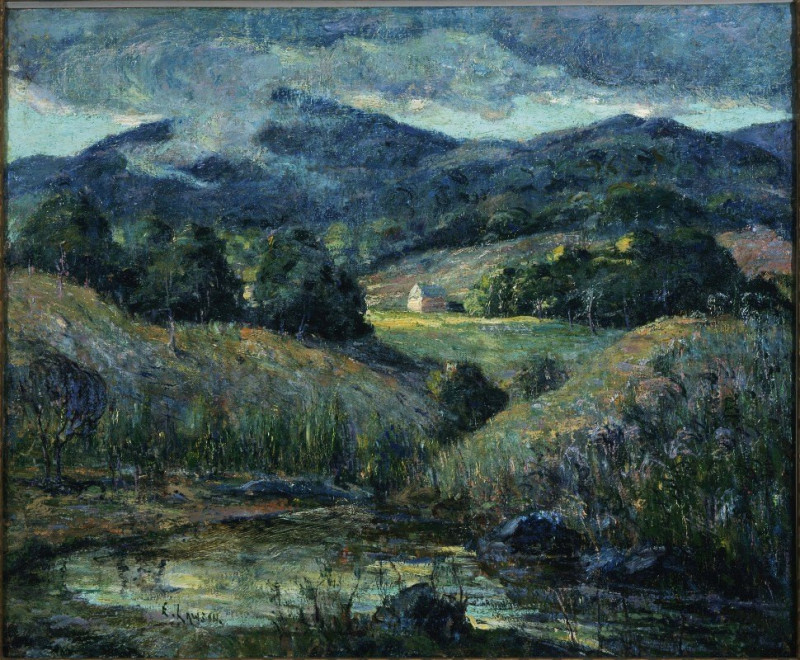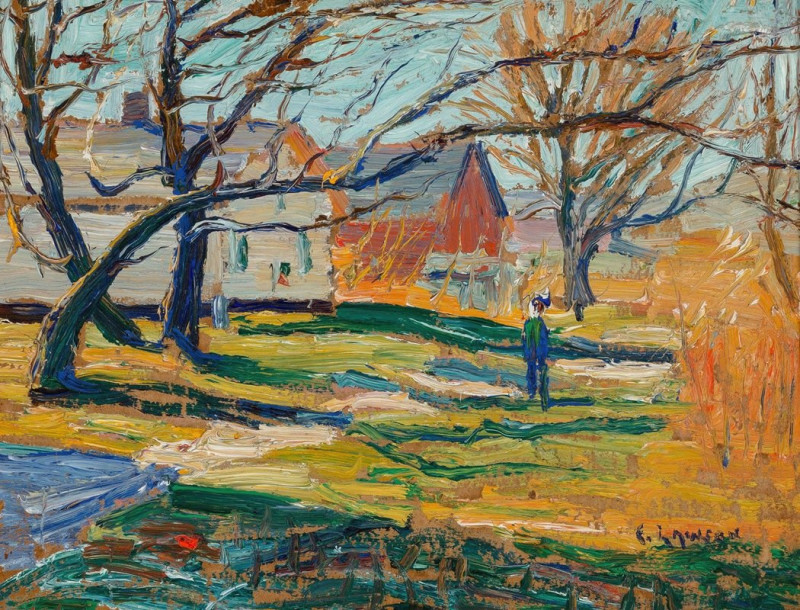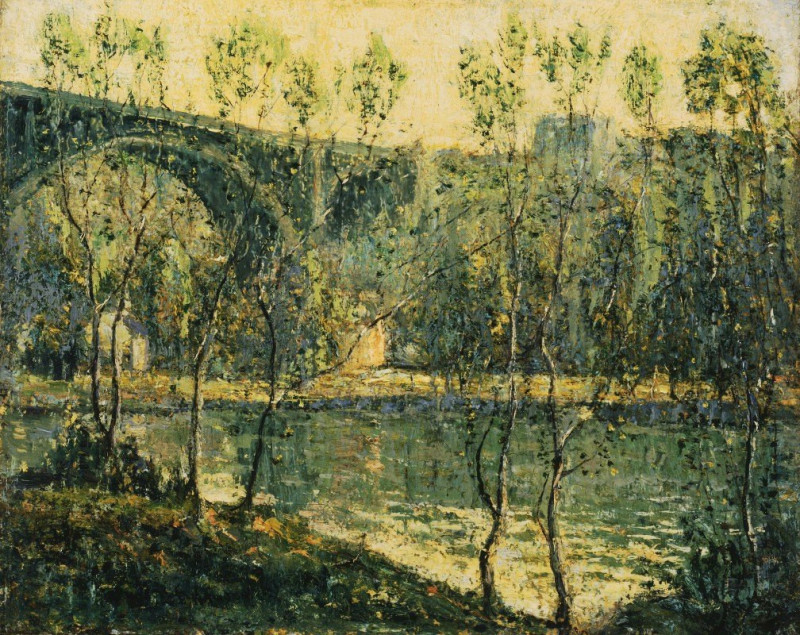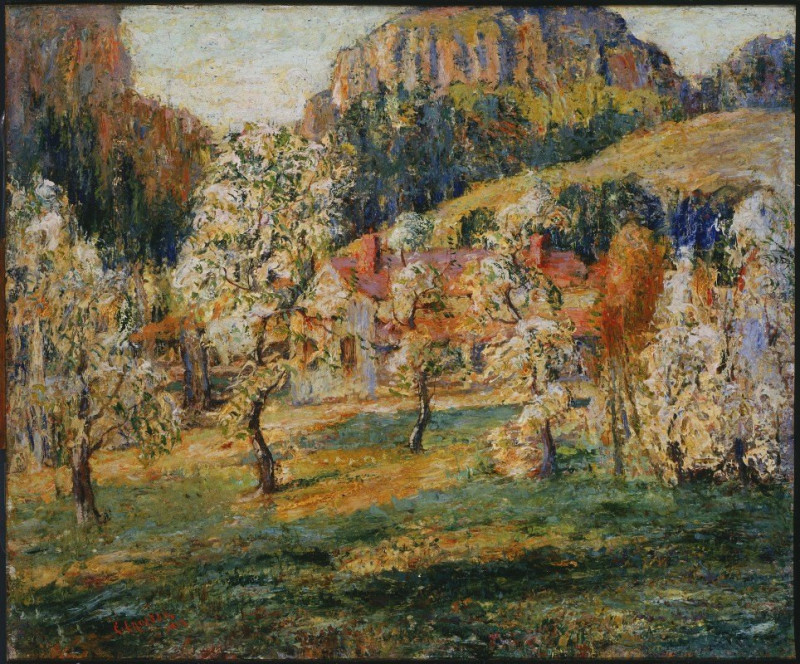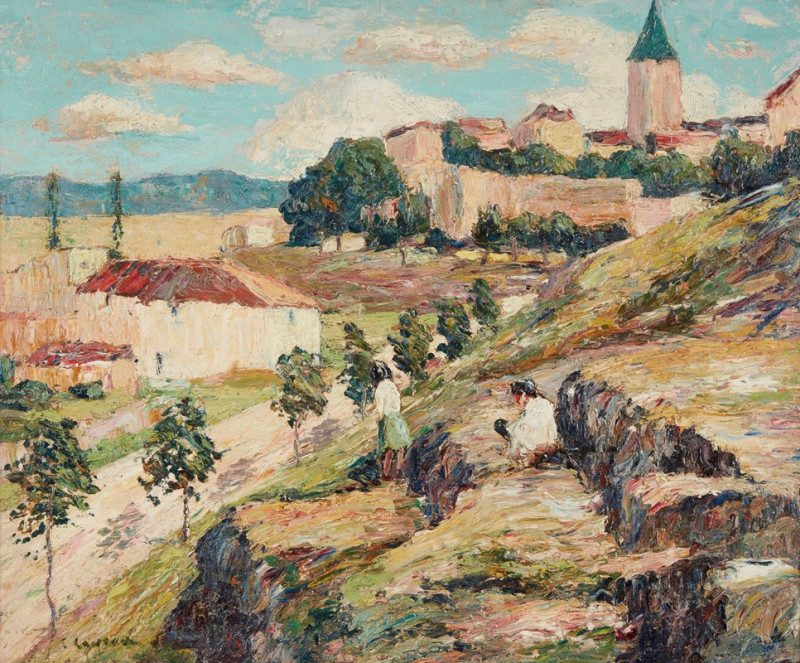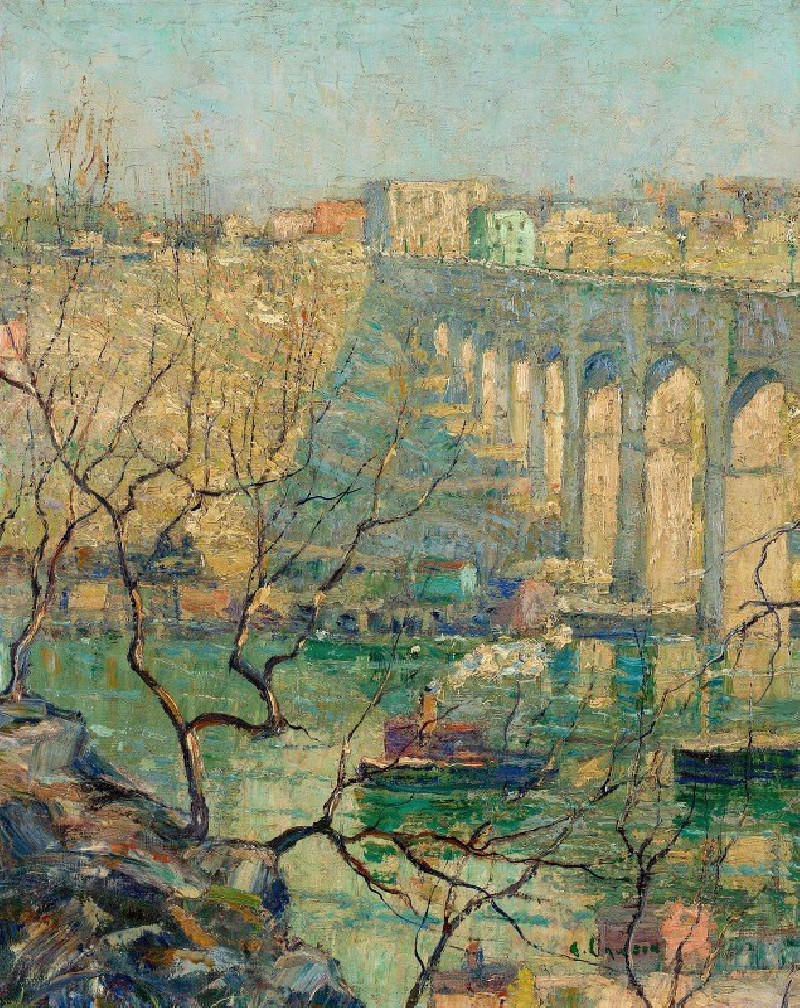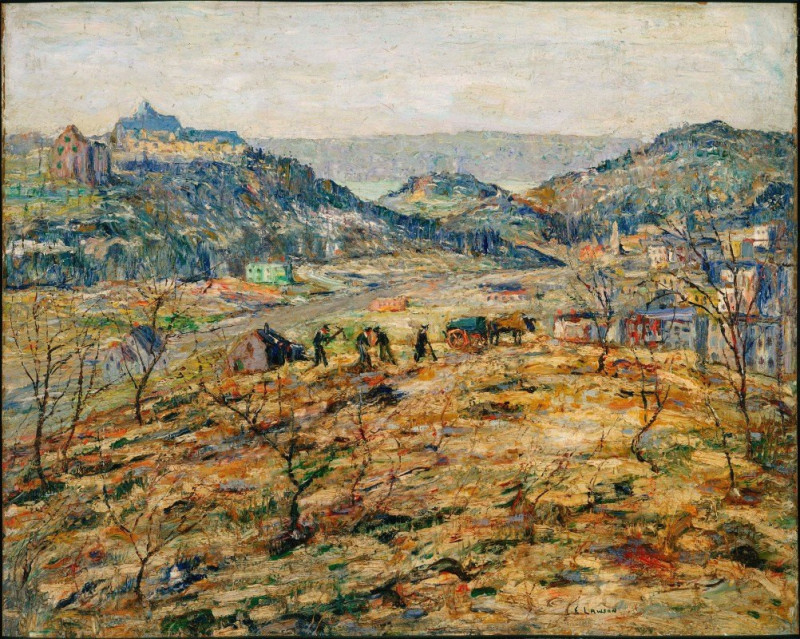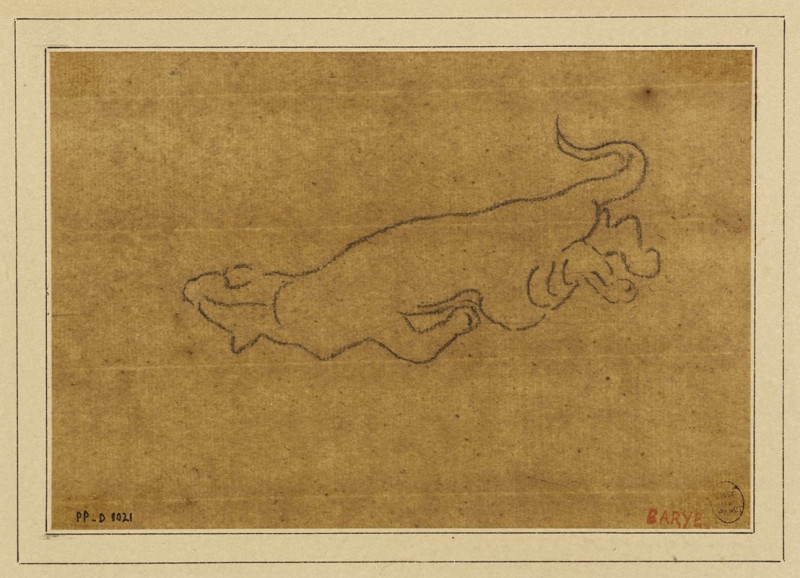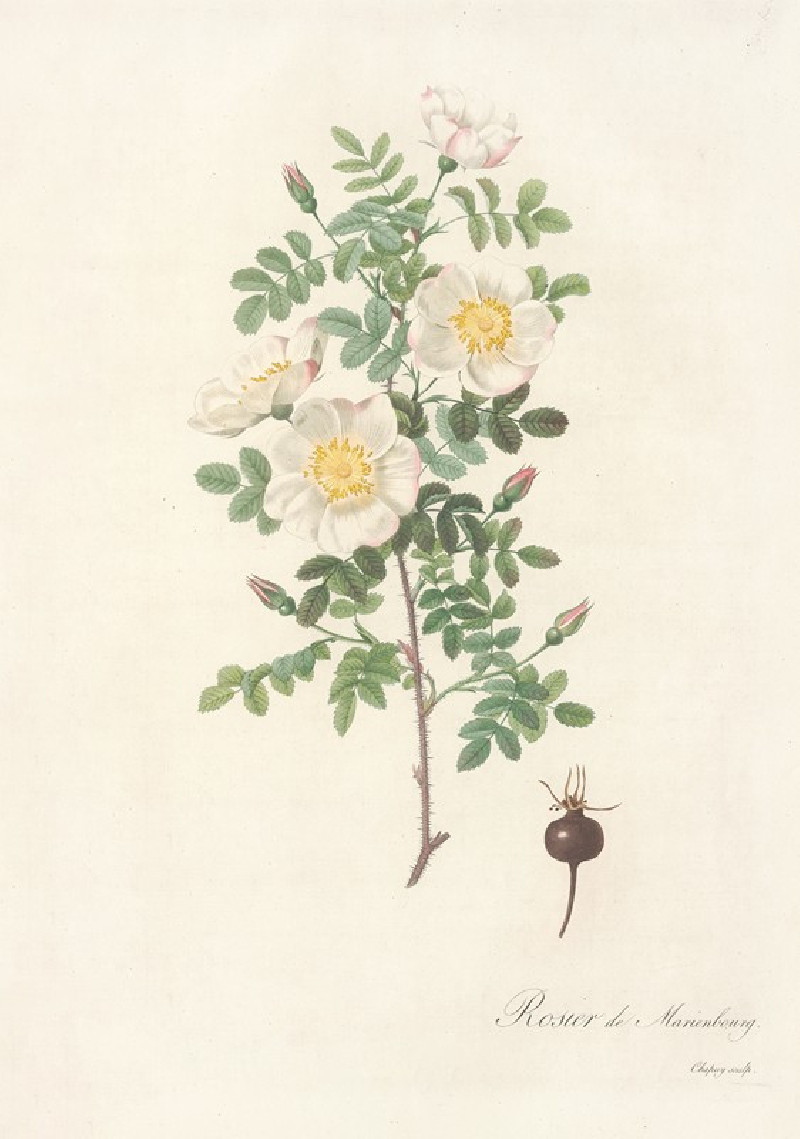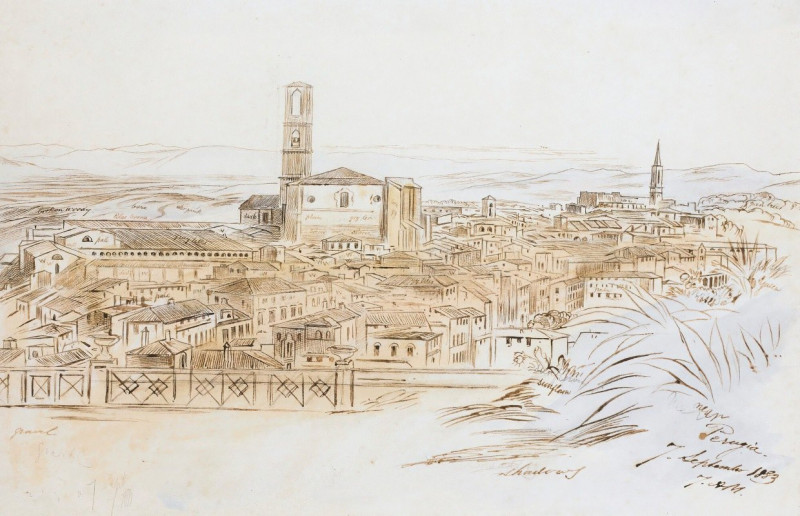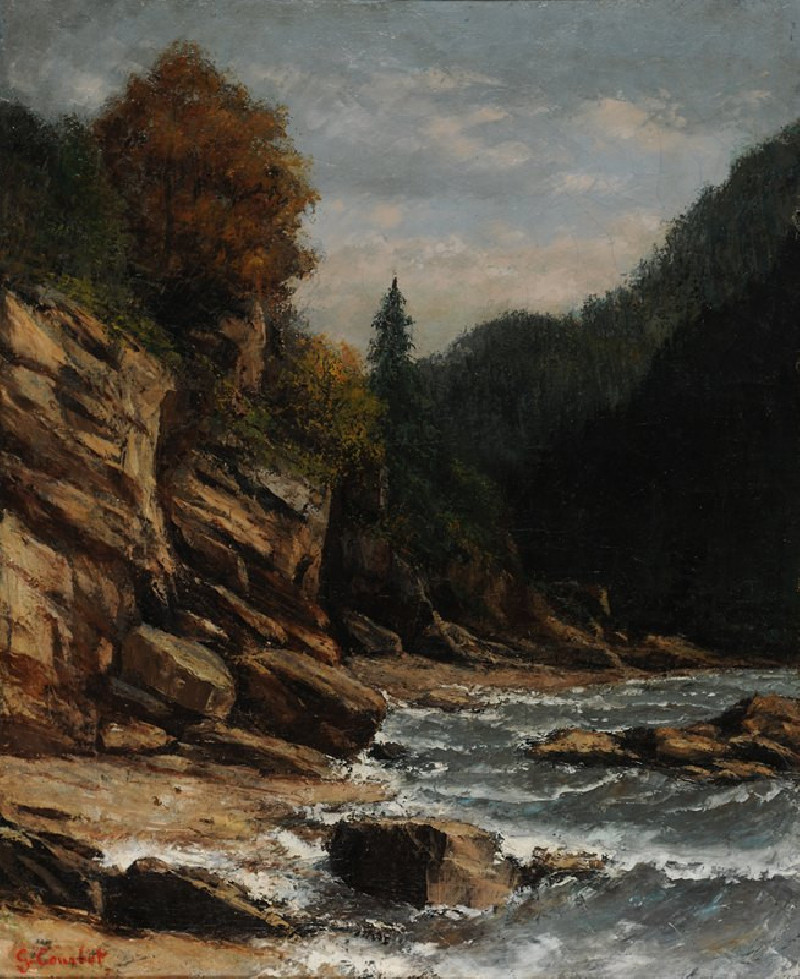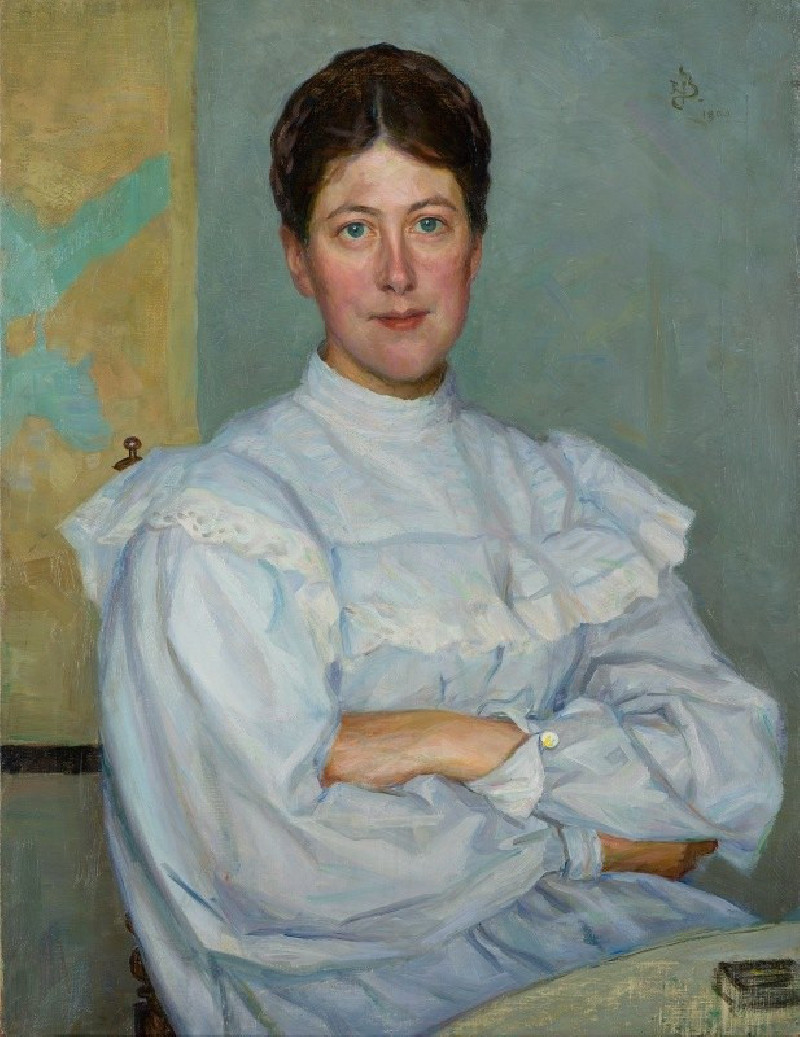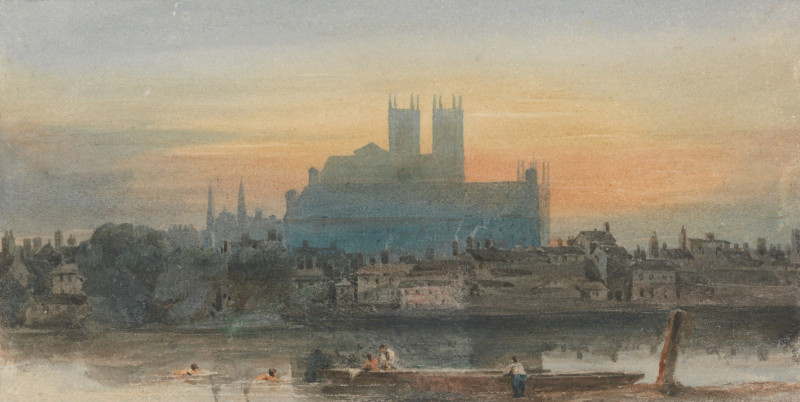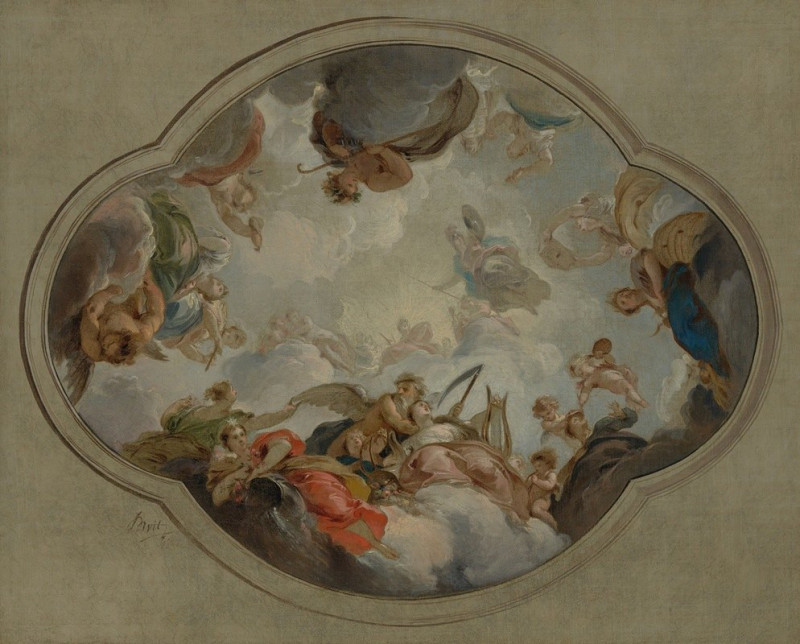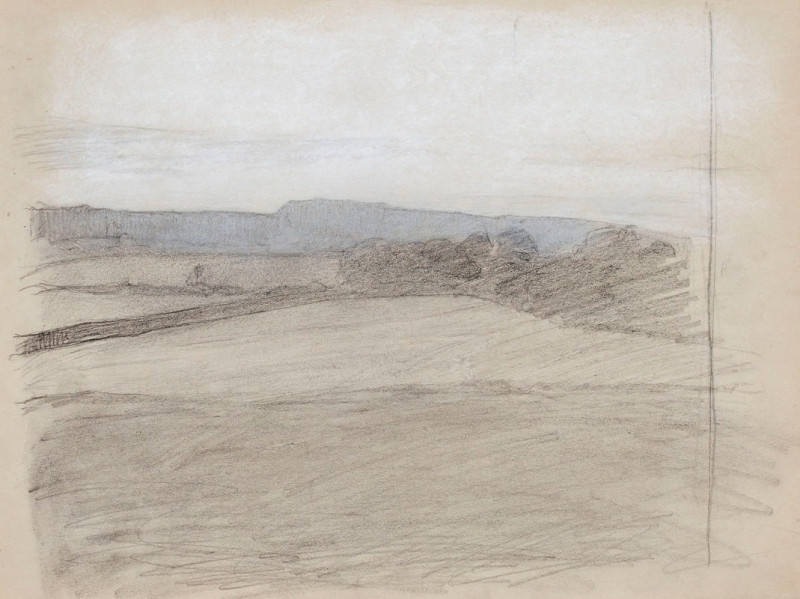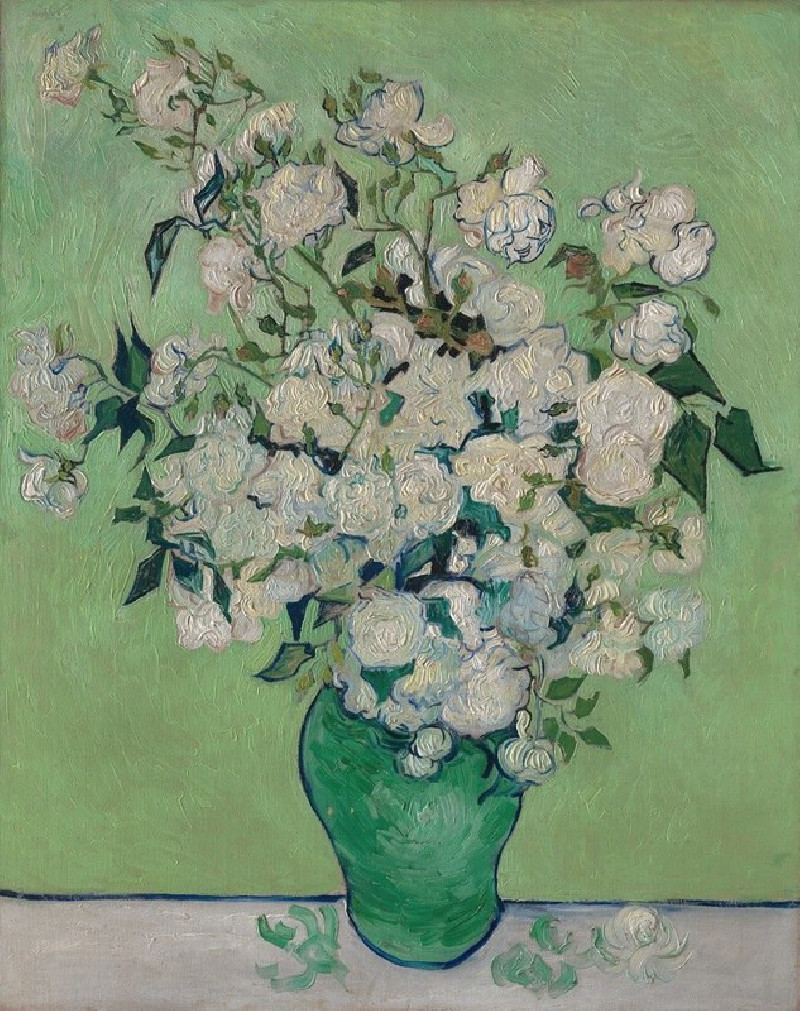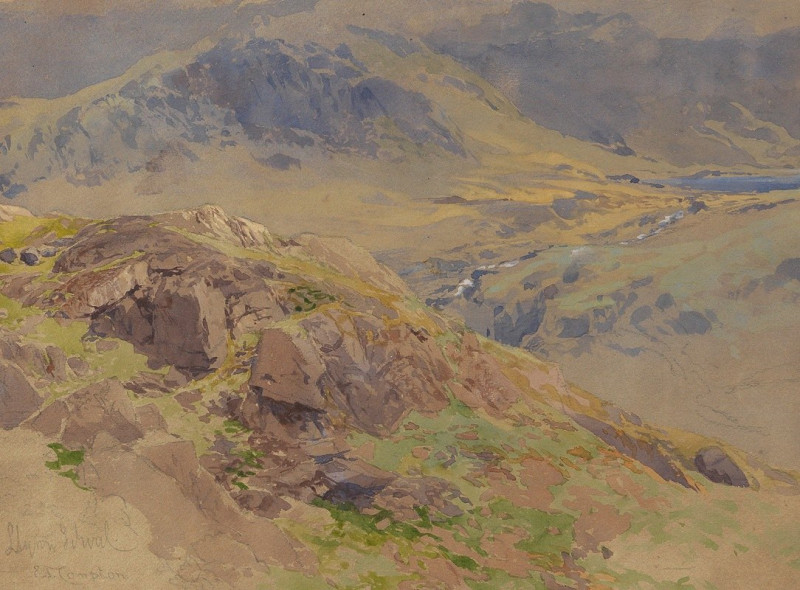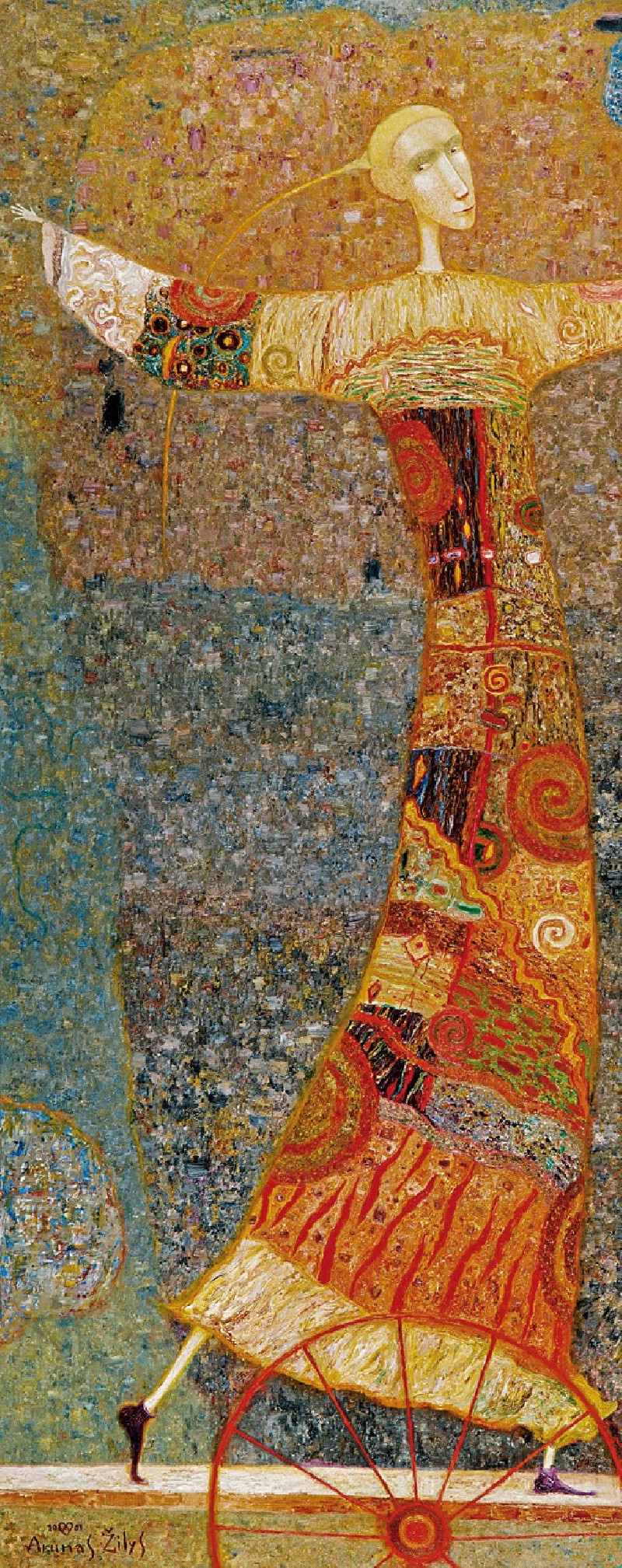Brooklyn Bridge (between 1917 and 1920)
Technique: Giclée quality print
Recommended by our customers
More about this artwork
"Brooklyn Bridge" is an evocative oil painting by the Canadian-American painter Ernest Lawson, created between 1917 and 1920. The artwork captures a rather impressionistic and textured view of the iconic Brooklyn Bridge in New York City, enveloped in a dreamy, almost ethereal atmosphere.In Lawson’s depiction, the bridge looms grandly over a tranquil river, its sturdy pylons and delicate suspension cables blending into a misty, greenish backdrop. The foreground features detailed and charming rooftops of buildings that add a quaint, almost intimate feel to the urban landscape. The entire scene is bathed in a soft light, likely indicative of a setting or rising sun, which casts a warm, subtle glow across the canvas. Small, lively brushstrokes animate the scene with touches of bright colors on the bridge, hinting at the bustling city life.This painting not only showcases Lawson's mastery of color and texture but also his ability to evoke mood and atmosphere, capturing a moment where the industrial prowess of New York softens into a tranquil, almost pastoral snapshot.
Delivery
Returns
Ernest Lawson (March 22, 1873 – December 18, 1939) was a Canadian-American painter and exhibited his work at the Canadian Art Club and as a member of the American group The Eight, artists who formed a loose association in 1908 to protest the narrowness of taste and restrictive exhibition policies of the conservative, powerful National Academy of Design. Though Lawson was primarily a landscape painter, he also painted a small number of realistic urban scenes. His painting style is heavily influenced by the art of John Henry Twachtman, J. Alden Weir, and Alfred Sisley. Though considered a Canadian-American Impressionist, Lawson falls stylistically between Impressionism and realism.


